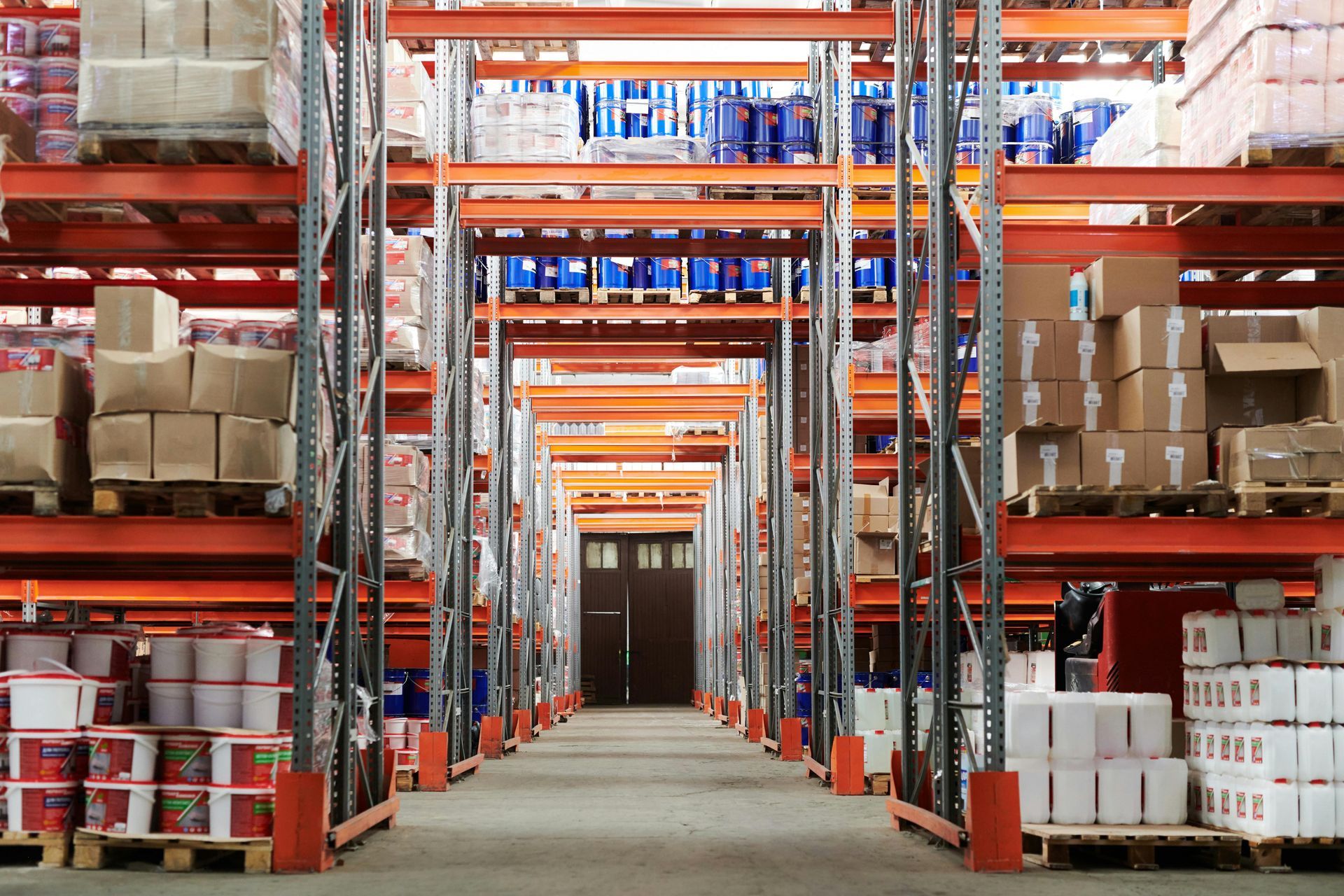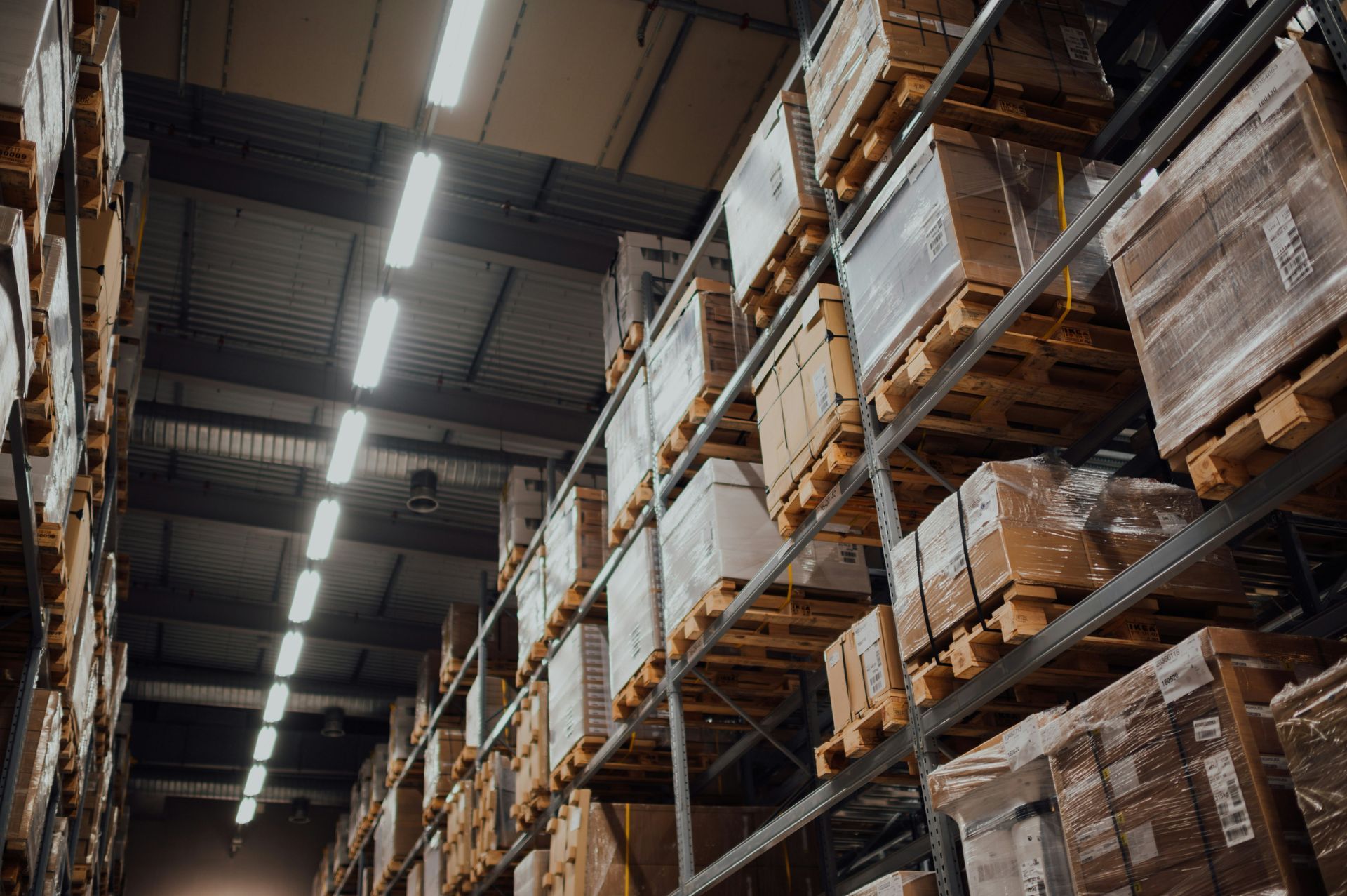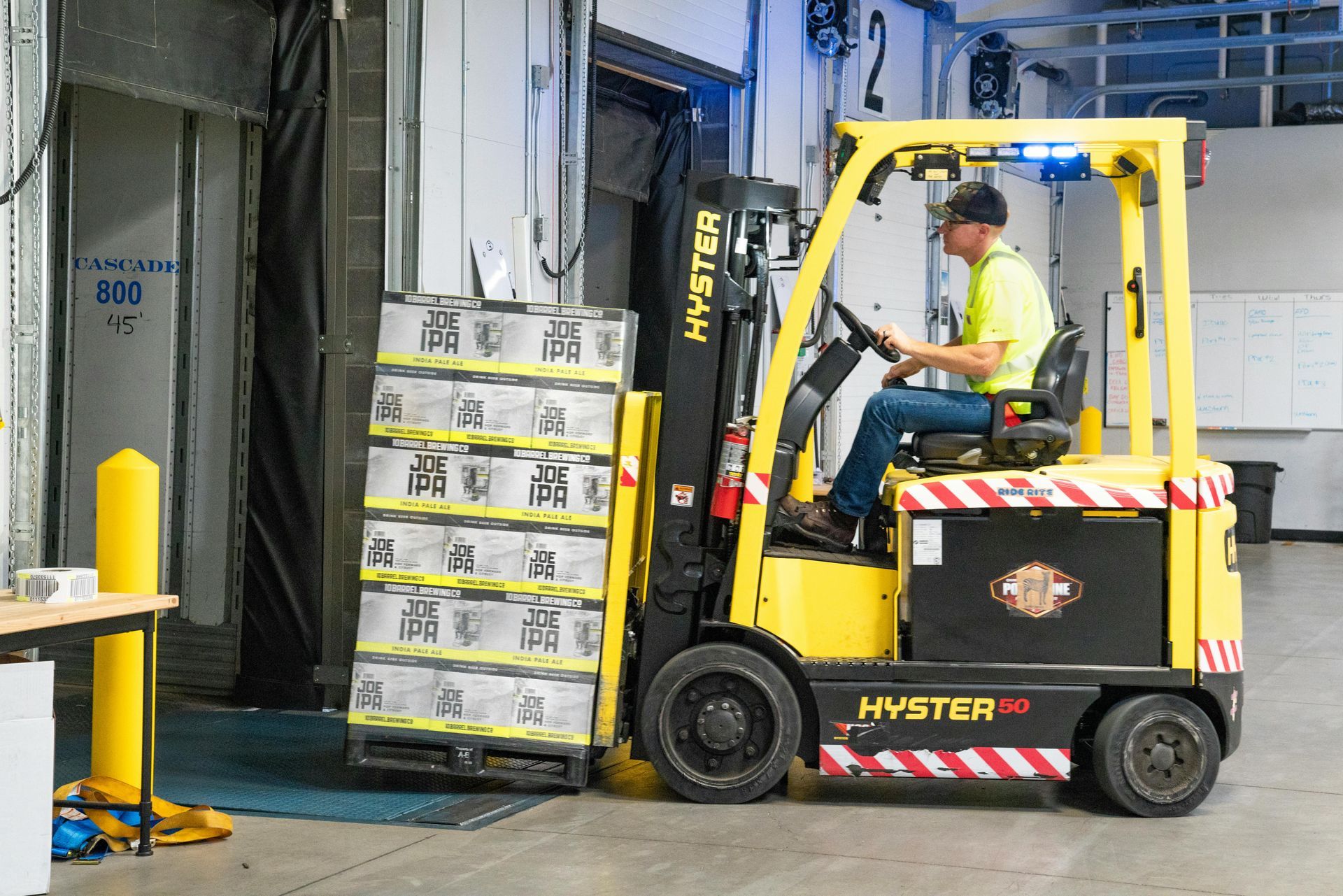A Guide to Winter Warehouse Safety
As winter approaches, warehouses and logistics teams across the Midwest face new challenges that demand preparation and attention.
Cold temperatures, snow, and icy conditions can all disrupt operations, increase safety risks, and slow productivity.
For companies managing storage, materials, and jobsite deliveries, winter brings more than just a temperature drop—it shifts how teams must work to stay safe and efficient.
We understand how quickly the season can test even the most experienced crews. That is why we believe a proactive approach to winter warehouse safety is essential.
With the proper precautions, preparation, and awareness, your operations can stay productive while protecting workers and materials from the elements.
Prepare Equipment for Cold Weather
Just as vehicles need winter maintenance, so does your warehouse equipment. Cold weather can affect hydraulic systems, batteries, tires, and even sensors on forklifts and loaders.
Before the temperature drops, inspect all machinery and perform preventive maintenance. Check fluids, lubricate moving parts, and ensure that batteries are fully charged and in good condition.
Keeping your forklifts and pallet jacks stored in temperature-controlled areas can extend their lifespan and reduce downtime. It is also wise to have extra equipment, batteries, and chargers available, since cold weather can shorten battery life.
Taking care of equipment early prevents costly repairs later and keeps your operations running smoothly even on the coldest days.
Prevent Slips, Trips, and Falls
Winter weather often brings wet and icy conditions that increase the risk of slips and falls both inside and outside the warehouse. Loading docks, entryways, and walkways can quickly become hazardous.
To reduce the risk, salt or sand should be applied to outdoor areas regularly, and absorbent mats should be used at entrances to collect snow and water from boots.
Encourage employees to wear non-slip, insulated footwear that provides good traction on wet surfaces. Regularly inspect floors for puddles or ice buildup, and clean up spills immediately.
Posting visible safety reminders in high-traffic zones reinforces awareness and helps create a culture of caution throughout the facility.

Prioritize Temperature Control and Worker Health
Employee health and comfort should be a top priority during winter. Exposure to cold temperatures, even for short periods, can lead to fatigue, reduced focus, and in severe cases, frostbite or hypothermia.
Ensure your warehouse or job site has designated warm-up areas where employees can take breaks, drink hot beverages, and recover from the cold.
Encourage proper layering with high-visibility, insulated clothing and thermal gloves. Remind workers to stay hydrated, as dehydration can still occur in cold environments.
Supervisors should also be trained to recognize signs of cold-related stress and know when to step in if someone appears unwell.
Protect Materials from Temperature Damage
Not only are workers vulnerable to the cold, but materials can be, too. Certain construction materials, adhesives, paints, and liquids can freeze or become less effective at low temperatures. Review your inventory and identify items that must be stored in climate-controlled spaces.
Moisture is another concern during the winter months. When warm air meets cold surfaces, condensation can form on metal or packaged goods, leading to rust, mold, or other damage. Ensure your warehouse ventilation and insulation systems function regularly and adequately monitor humidity levels.
By maintaining stable storage conditions, you protect both your materials and your bottom line.
Stay Ahead with Emergency Preparedness
Winter weather can be unpredictable. Power outages, snowstorms, and road closures can delay deliveries or create hazardous conditions for workers. Every warehouse should have an updated emergency response plan that covers severe weather procedures, communication protocols, and evacuation routes.
Test your backup power systems and ensure emergency lighting, heaters, and generators are ready to use. Keep first aid kits and safety supplies stocked, and confirm that all employees know where to find them.
If your operations depend on transportation, coordinate with your logistics partners to plan alternative routes or reschedule deliveries when road conditions are unsafe.
Being prepared minimizes disruptions and demonstrates your commitment to safety and reliability.

Adjust Scheduling and Communication
When winter storms hit, flexibility becomes key. Communicate weather-related updates early to avoid confusion or unnecessary risk. Encourage workers to report hazards such as icy walkways or equipment malfunctions immediately. Adjust shifts or delivery schedules to reduce travel during severe weather if possible.
Transparent communication helps build trust and keeps everyone aligned when conditions are unpredictable. A simple text alert system or internal communication platform can make a big difference in keeping operations running efficiently.
Work With Gustine Logistics
Keeping your logistics operation running smoothly during the winter starts with a commitment to safety. The cost of a cold-weather injury or accident far outweighs the time and resources needed to plan ahead.
Review your winter safety protocols, inspect your equipment, and check in with your team before the temperatures drop. Safety does not happen by accident; it happens by design.
At Gustine Logistics, safety is built into everything we do. From managing warehouse environments to ensuring on-time material delivery, our team helps clients stay productive and protected in every season.
Midwest logistics companies can position themselves for long-term success in 2025 and beyond by focusing on safety, sustainability, and thoughtful planning.
Contact
our team today to learn how we can help optimize your logistics operations and keep your business moving forward all winter long.


